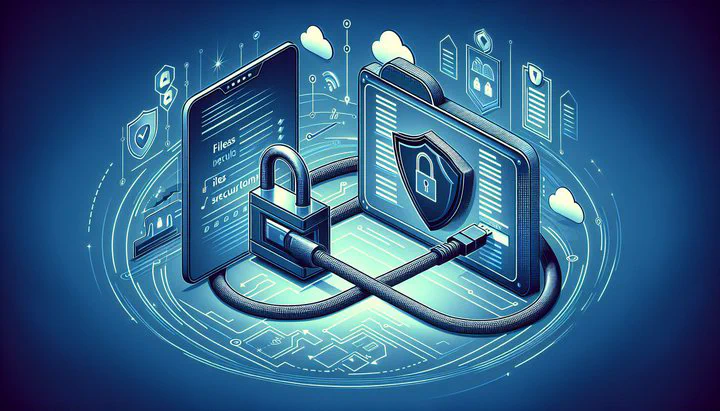How to Store Files from a Virtual Machine

How to Store Files from a Virtual Machine
If you’re working with virtual machines, you know how handy they can be for testing software or learning new systems. But have you ever wondered about the safest ways to store files from them? In this guide, we’ll explore how to store files from a virtual machine without risking malware infections.
Understanding the Risks of Storing Files from a Virtual Machine
Virtual machines are like computers within computers. They allow you to run different operating systems on the same physical computer. Many IT professionals use them for testing software, learning new systems, or even running risky files safely. But when it comes to how to store files from a virtual machine, you must be very careful. Have you ever dealt with a suspicious file from a virtual machine? What steps did you take to stay safe?
Storing files directly from a virtual machine can be dangerous. Sometimes, files from these environments might be risky or dangerous. This is because virtual machines are often used to test software that hasn’t been proven safe. If you’re not careful, these files can carry malware. Malware is software designed to harm your computer. If you save a file without checking it first, you might accidentally let malware into your main computer system.
Malware infections can cause a lot of trouble. They might delete your files, steal your information, or even make your computer act weird. This is why saving files without risking malware infections is super important. Always use secure methods when dealing with files from virtual machines.
To keep your data safe, you need secure file storage practices. Think about what could happen if a suspicious file gets loose. It’s like opening a door to problems you don’t want. Always remember, the goal is to handle these files with care to prevent any issues. So, whether you’re storing suspicious files or just trying to manage your data safely, knowing the risks is the first step to keeping everything secure.
Methods for Safe File Storage
When you’re figuring out how to store files from a virtual machine, staying safe is key. One of the first things you can do is use antivirus and anti-malware solutions within your virtual machine. These tools help scan and detect any suspicious files before they can cause harm. By regularly updating these programs, you improve your chances of catching malware early and saving files without risking malware infections.
Another smart technique is using snapshots and backups. A snapshot is like a photograph of your virtual machine at a certain point in time. If something goes wrong, you can undo the changes by going back to that snapshot. Backups let you save important files in a safe place, so you don’t lose them if something happens. Always make sure you have recent snapshots and backups, especially when dealing with files you’re unsure about.
Transferring files securely from a virtual machine to an external storage device is another important step. Before you move any files, make sure they’re not harmful. You can use secure methods like encrypted USB drives or secure file transfer protocols (SFTP) to store them outside of this machine. Encryption scrambles your files so only authorized people can read them, adding an extra layer of security.
Finally, consider encrypting files before moving them. This process involves converting your data into a code to prevent unauthorized access. Even if someone gets a hold of your files, they won’t be able to read them without the decryption key. Always use strong encryption methods to protect your files, ensuring that your data remains safe even when it leaves the virtual machine. By following these guidelines, you can confidently handle and store files from your virtual machine without inviting risk.
Best Practices for Viewing and Storing Files Outside the Virtual Machine
When it comes to viewing from a virtual machine and storing files safely outside of it, taking the right steps can help prevent trouble. One important thing to remember is to use isolated environments when you need to check suspicious files. An isolated environment keeps risky files separate from your main system, so even if they have malware, they can’t harm your computer. Tools like sandboxes or separate virtual machines can be helpful for this purpose.
Next, you’ll want to use reliable tools and software for transferring files securely to an external storage device. Make sure the software you use has good security features to keep your files safe during the transfer. Some good options include secure file transfer protocols (like SFTP) or encrypted USB drives. These tools help ensure your files remain protected as you store them outside of this machine.
It’s also crucial to regularly update your security protocols and software. Technology changes quickly, and new threats appear all the time. By keeping your security tools up to date, you can better protect your data from malware infections and other risks. Ensure your antivirus, anti-malware, and firewalls are always current, and regularly check for any updates that might enhance your security.
Finally, consider using cloud storage solutions that offer strong security measures. Many cloud services provide encryption and other protections to help keep your data safe. By using a secure cloud service, you can easily access your files from anywhere while ensuring they remain secure. This is a great way to store files from a virtual machine in a safe place, with the added benefit of convenience.
By using these best practices, you can confidently manage and store your files, minimizing the risks of infections and data breaches. Always stay vigilant and proactive in your approach to handling files from virtual machines, and you’ll be well on your way to keeping your data secure. Have tips or experiences to share? We’d love to hear them in the comments below!